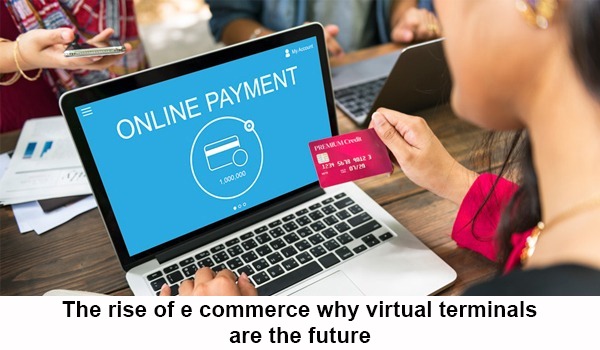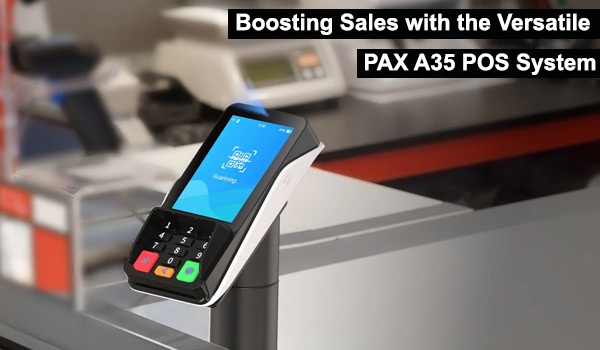
Introduction
In the dynamic realm of e-commerce, staying ahead of the curve is essential for businesses seeking sustained success. The advent of virtual terminals has emerged as a game-changer, revolutionizing the way online transactions are conducted. This article delves into the reasons behind the rise of virtual terminals and why they are poised to be the linchpin of the future e-commerce landscape.
Understanding Virtual Terminals
Definition and Functionality
Virtual terminals are online interfaces that allow merchants to process payments without the need for physical card readers. Unlike traditional point-of-sale (POS) systems, virtual terminals operate over the internet, providing a secure platform for businesses to accept payments from customers.
Accessibility and Convenience
One of the key drivers behind the surge in virtual terminal adoption is their accessibility. Businesses can accept payments from anywhere with an internet connection, enabling seamless transactions whether they operate in a brick-and-mortar store, from home, or on the go. This level of convenience not only caters to the needs of merchants but also enhances the overall customer experience.
Advantages of Virtual Terminals
Cost Efficiency
Traditional Point-of-Sale (POS) systems have long been associated with significant upfront costs and ongoing maintenance expenses. In contrast, virtual terminals present a compelling and cost-effective alternative, particularly beneficial for startups and small businesses. The elimination of the need for physical hardware, such as card readers and terminals, substantially reduces initial investment requirements. Moreover, the absence of complex hardware setups minimizes maintenance costs, allowing businesses to allocate resources more efficiently.
This cost efficiency extends beyond the realm of equipment. Virtual terminals often operate on a subscription-based model, enabling businesses to choose plans that align with their transaction volumes and specific needs. This flexibility not only aids in controlling costs but also ensures that businesses pay for services that directly contribute to their operational requirements. As a result, virtual terminals emerge as a financially savvy solution, empowering businesses to channel resources toward growth initiatives rather than hefty infrastructure investments.
Global Reach
The geographical limitations that traditional businesses face are dismantled by the global reach facilitated by virtual terminals. By enabling online payment acceptance, businesses can transcend local boundaries and tap into a vast, global customer base. This expanded market reach is particularly advantageous for businesses seeking growth and diversification. Whether a business operates in a niche market or offers products and services with universal appeal, the ability to accept payments online opens doors to customers worldwide.
Moreover, virtual terminals facilitate transactions in multiple currencies, catering to international customers and enhancing the overall shopping experience. This global accessibility not only fosters business expansion but also positions companies strategically in an interconnected world, where digital transactions are the conduit to global commerce.
Security Measures
Security is of utmost importance in the digital age, particularly concerning online transactions. Virtual terminals address this concern head-on by employing robust encryption technologies. These security measures are designed to safeguard sensitive customer data during the payment process, significantly reducing the risk of fraud and unauthorized access.
The implementation of Payment Card Industry Data Security Standard (PCI DSS) compliance ensures that businesses using virtual terminals adhere to industry regulations. This not only protects the business from legal repercussions but also plays a crucial role in building and maintaining trust with customers. As cyber threats continue to evolve, the commitment to cutting-edge security measures becomes a differentiating factor for businesses adopting virtual terminals.
Streamlined Operations
The streamlined nature of virtual terminals brings a host of operational benefits to businesses. From inventory management to order tracking, virtual terminals enable businesses to centralize and automate various processes, resulting in increased efficiency. This centralized approach minimizes the risk of manual errors and enhances the accuracy of transactions, contributing to a smoother overall operation.
Furthermore, the data generated through virtual terminal transactions can be leveraged for insightful analytics, aiding businesses in making informed decisions. Whether it's optimizing inventory levels or identifying trends in customer purchasing behavior, the streamlined operations facilitated by virtual terminals empower businesses to operate more intelligently and responsively in the competitive e-commerce landscape
Future Trends and Innovations
Integration with Emerging Technologies
The future trajectory of virtual terminals is intricately tied to their integration with cutting-edge technologies. As we witness the relentless march of technological advancement, virtual terminals are poised to seamlessly incorporate innovations such as artificial intelligence (AI) and blockchain. The fusion of virtual terminals with AI holds tremendous promise in enhancing security measures. AI-powered algorithms can analyze transaction patterns in real-time, swiftly detecting anomalies and potential fraudulent activities. This proactive approach to security not only fortifies the payment ecosystem but also instills confidence in both merchants and customers.
Moreover, the marriage of virtual terminals with blockchain technology introduces unprecedented transparency and immutability to financial transactions. Blockchain's decentralized ledger ensures that each transaction is securely recorded, reducing the risk of data manipulation or hacking. This not only aligns with the paramount need for data integrity but also contributes to the evolution of trust in online transactions. Additionally, the integration of AI can automate various aspects of transaction processing, from fraud detection to customer support, ushering in an era of efficiency and personalized experiences that cater to the unique needs of individual users.
Contactless Payments and Mobile Wallets
The global landscape of payment preferences is undergoing a seismic shift towards contactless payments and mobile wallets, and virtual terminals are at the forefront of accommodating this transformation. The ubiquity of smartphones and the convenience they offer have fueled the rise of contactless payment methods. Virtual terminals seamlessly align with this trend, allowing businesses to cater to customers who prefer the swiftness and security of contactless transactions.
The integration of virtual terminals with mobile wallets further amplifies the convenience factor. As consumers increasingly rely on digital wallets to store payment information securely, virtual terminals can provide a frictionless payment experience. This not only simplifies the checkout experience but also contributes significantly to heightened customer satisfaction.Additionally, the security features inherent in virtual terminals, such as encryption and tokenization, complement the security measures embedded in mobile wallet technologies, creating a robust defense against potential cyber threats.
In the ever-changing realm of digital payments, businesses that harness the potential of virtual terminals to adopt contactless payments and integrate with mobile wallets are not merely adjusting to contemporary trends; they are strategically positioning themselves as pioneers at the forefront of the future of financial transactions. By actively embracing these advancements, these businesses are not only staying current but also proactively shaping the trajectory of financial technology, setting themselves apart as leaders in the dynamic landscape of digital finance.
Conclusion
In the ever-evolving landscape of e-commerce, embracing technological advancements is not merely an option but a necessity. Virtual terminals have emerged as a pivotal force, offering a plethora of benefits ranging from cost efficiency to global reach. As businesses adapt to the changing dynamics of consumer behavior and technological innovation, the integration of virtual terminals is not just a trend but a strategic move towards a more secure, accessible, and efficient future for online transactions.









